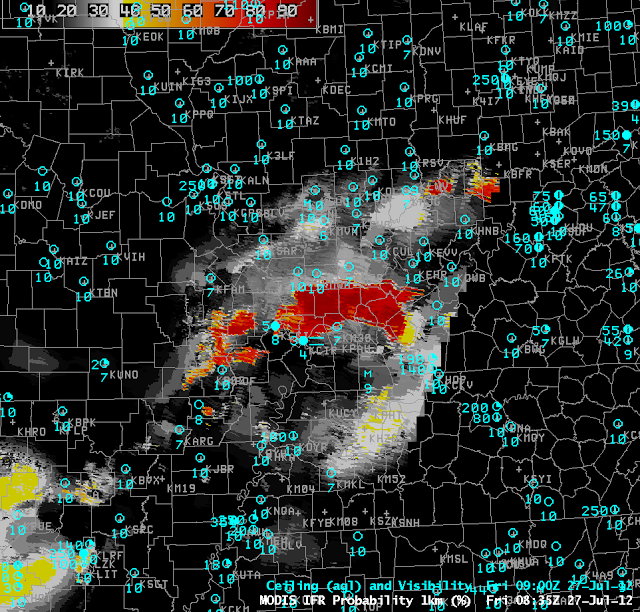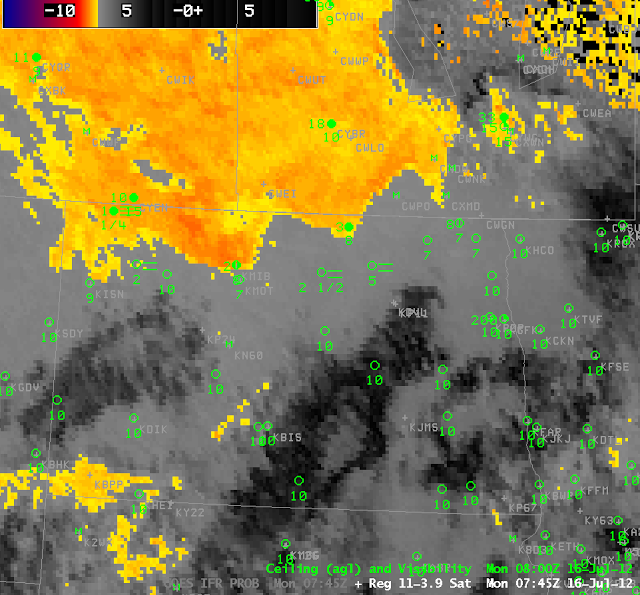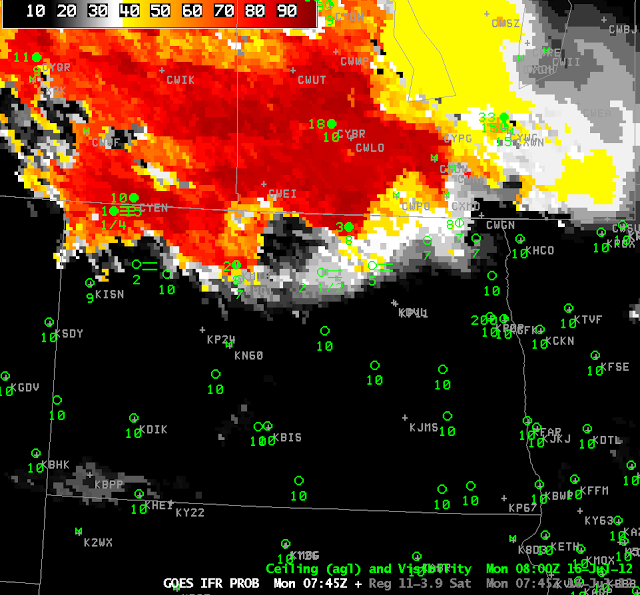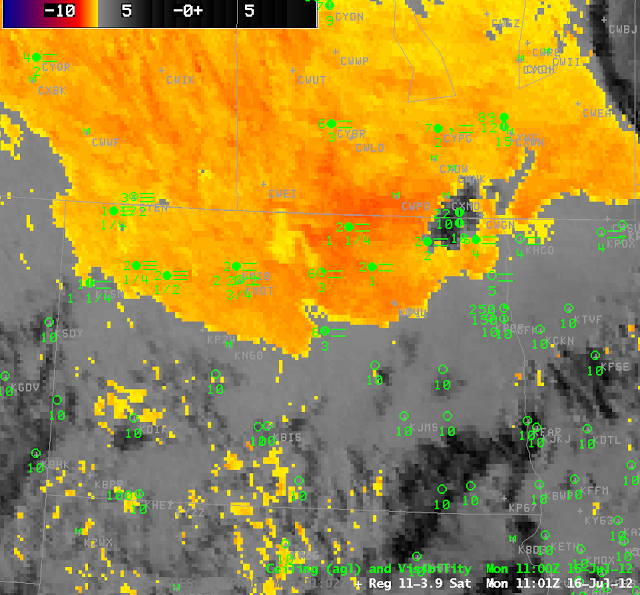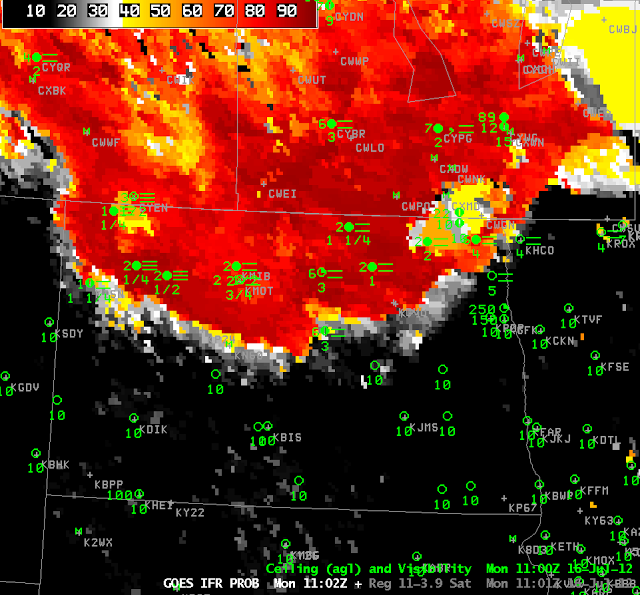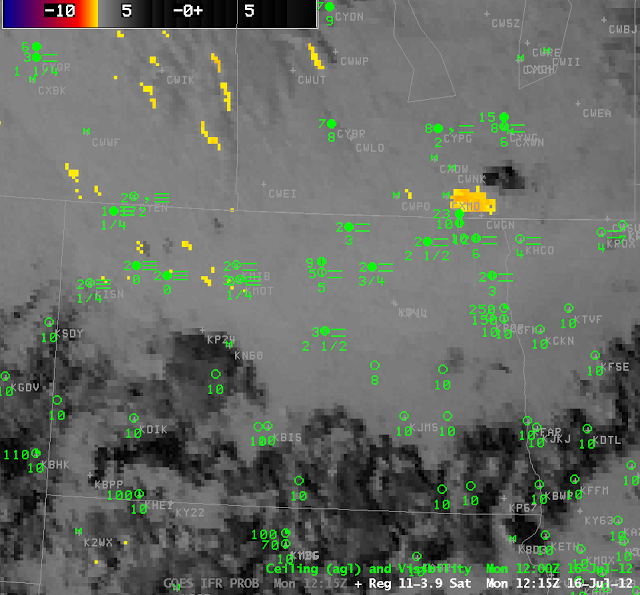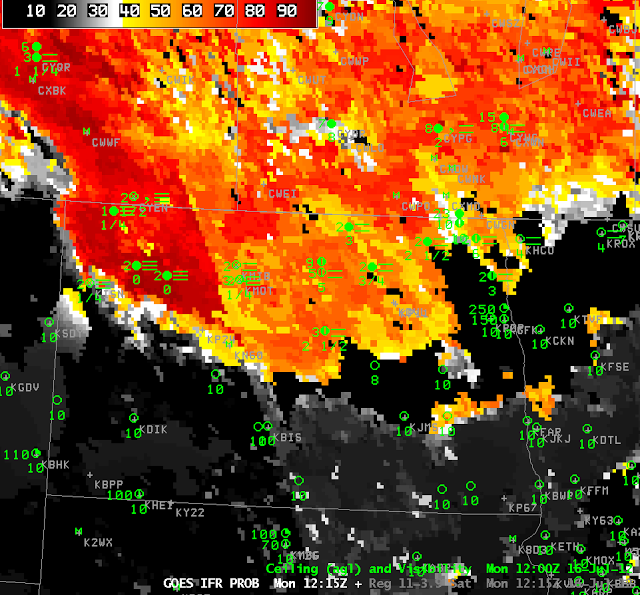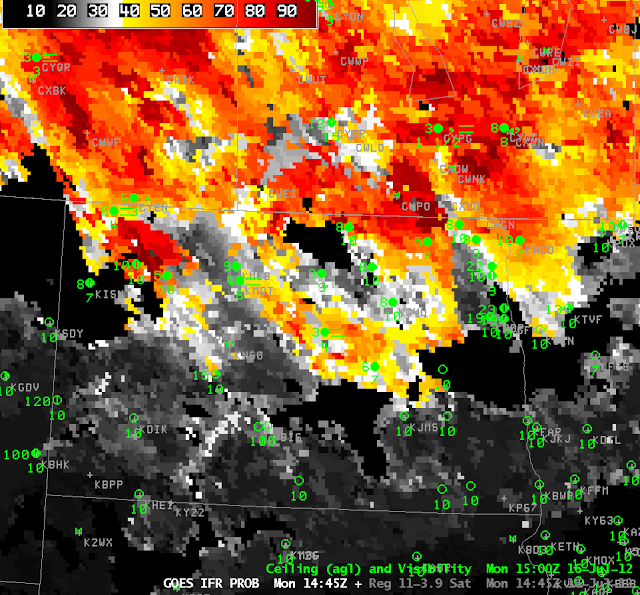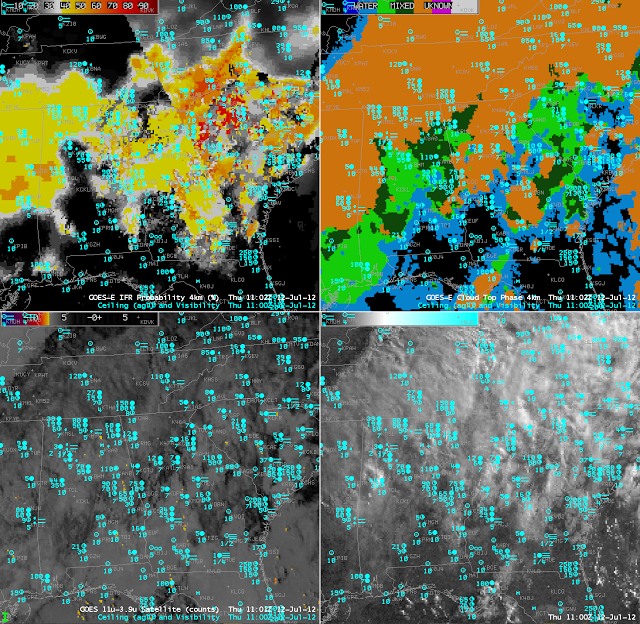 |
| GOES-R IFR Probabilities near sunrise on 27 July 2012 |
The loop above demonstrates an artifact of the GOES-R IFR probabilities that occurs due to the terminator. Note how values within the circled region are constant for the last three images. When the solar zenith angle is between 85-90 degrees there is a stabilizing temporal aspect to the algorithm. In these 5 degrees (just after sunrise), the last nighttime satellite parameters from an angle >90 degrees are kept and used (and re-used) because the visible channels are not reliable at such high solar zenith angles. Current Rapid Refresh model information is used, but if the model data doesn’t vary greatly over this timeframe then it is likely that the same information will be used for the Bayesian model, thus resulting in the same probability values. This approach reduces significant artifacts in the terminator region where FLS detection is complicated by a low sun angle and the attendant rapid changes in reflectivity.
Note that this is occurring in a region of fog as evidenced by the MODIS-based IFR probabilities at 0900 UTC (above). The image at 1215 UTC (below), 30 minutes after the end of the animation above, shows how the IFR probabilities have evolved as the sun rises.
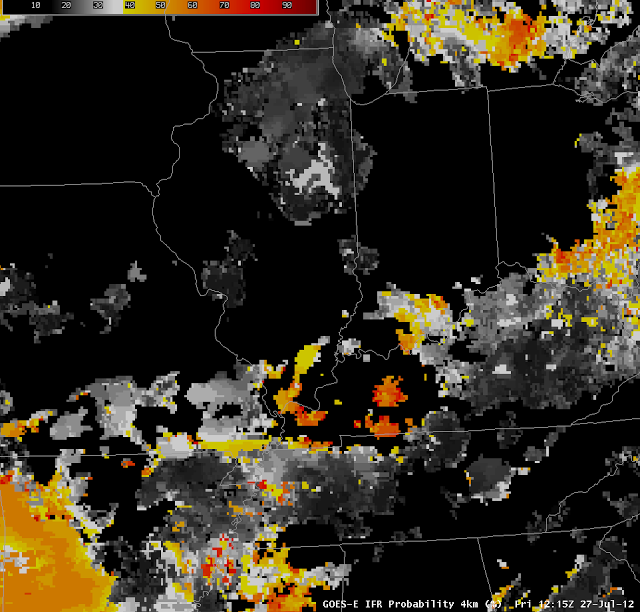 |
| GOES-R IFR Probabilities as computed from GOES-East information, 1215 UTC on 27 July 2012. |

